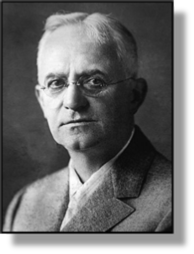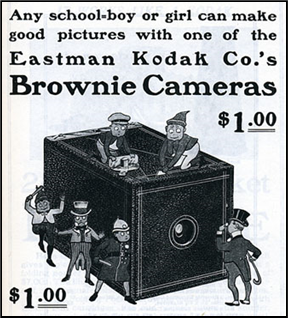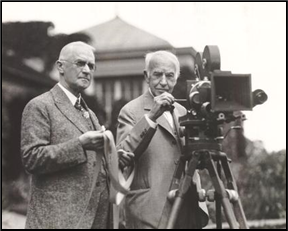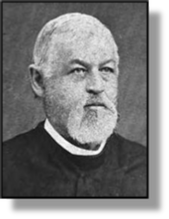


xxxxxAs we have
seen, in 1839 (Va)
the French painter Louis Daguerre invented a photographic process
known as the “daguerreotype”, and in the same year the English
chemist William Henry Fox Talbot introduced the “calotype process”
whereby many prints could be made from a single negative. Taking
advantage of these improvements, in 1888 the American inventor George Eastman came up with an
inexpensive handheld box camera and the slogan “You press the
button. We do the rest”. Known as a “Kodak” and using celluloid
roll film, this camera could be sent back to Eastman’s factory at
Rochester, New York, when the film had been used, and then
returned to its owner with the film processed and a new one
already loaded. This idea proved immensely popular, and became
even more so in 1900 when the Kodak Brownie enabled the film alone
to be removed and sent for processing. By that year this quality
camera was selling for as little as a dollar, and by the mid 1920s
the Eastman Kodak Photographic Company was trading worldwide, and
had the monopoly of the market in the United States. As a result,
Eastman made a vast fortune, but he introduced a profit-
GEORGE EASTMAN 1854 -
Acknowledgements
Eastman: date and
photographer unknown – Library of Congress, Washington. Eastman
and Edison: 1928,
photographer unknown – Edison and Ford Museum, Fort Myers,
Florida, USA. Goodwin: contained in The Theatre of Science by the media writer
Robert Grau (1858-
 xxxxxEarlier in the century, as we have seen, the French
painter Louis Daguerre and the English chemist William Henry Fox
Talbot made important advances in the development of photography.
In 1839 (Va) Daguerre
invented a single-
xxxxxEarlier in the century, as we have seen, the French
painter Louis Daguerre and the English chemist William Henry Fox
Talbot made important advances in the development of photography.
In 1839 (Va) Daguerre
invented a single-
xxxxxGeorge
Eastman (illustrated above) was the man who built upon this foundation, and, as
it proved, on a very large scale. His production of the “Kodak” box
camera in 1888,
plus his introduction of celluloid roll-
xxxxxEastman was
born in Waterville, New York. His family moved to Rochester, New
York, when he was five and it was there that he went to school. He
showed scant ability in his studies, and, following his father’s
death, he left school at fourteen to help his mother make ends
meet. He worked for a time as an office boy in an insurance firm,
but in 1874 he managed to get a job in the Rochester Savings Bank.
His increased salary enabled him to indulge in his pet hobby,
photography, and he bought a camera and all the paraphernalia that
went with it -
 xxxxxSpurred on by this success, and determined to
simplify the photographic process, he then set about replacing the
dry plate with a 20-
xxxxxSpurred on by this success, and determined to
simplify the photographic process, he then set about replacing the
dry plate with a 20- ated
inside the box, and the following year the paper roll was replaced
by a roll of transparent celluloid film (The brainchild, in fact,
of the American clergyman Hannibal Goodwin in 1887.) Then in 1890
Eastman introduced the “Brownie”. This was a box camera designed
along the same lines, but it was less expensive, and the spool was
able to be removed, doing away with the need to send the whole
camera back to the factory.
ated
inside the box, and the following year the paper roll was replaced
by a roll of transparent celluloid film (The brainchild, in fact,
of the American clergyman Hannibal Goodwin in 1887.) Then in 1890
Eastman introduced the “Brownie”. This was a box camera designed
along the same lines, but it was less expensive, and the spool was
able to be removed, doing away with the need to send the whole
camera back to the factory.
xxxxxSuch was
the demand for this revolutionary idea that in 1892 he established
the Eastman Kodak Photographic Company, again at Rochester, and
became one of the first firms to mass-
xxxxxQuite apart from becoming one of the world’s leading industrialists, Eastman was also one of the outstanding philanthropists of his time. Few men since or after him have given so generously to worthy causes. It is estimated that he donated more than $75 million to various projects. His contributions included large amounts to the Massachusetts Institute of Technology, endowments for the establishment of the Eastman School of Music in 1918 and, three years later, a school of medicine and dentistry at the University of Rochester. Just before his death he set up dental clinics in a number of European capitals, including London and Paris.
xxxxxEastman was ever full of new ideas, and a brilliant entrepreneur, but, privately, he was a very modest man who shunned publicity. Ironically, despite his generous contributions to public health, and his own private fortune, he was struck down in his last years by an incurable disease of the spine and could do nothing to alleviate his suffering. The pain became so acute that in March 1932 he took his own life with a single gunshot to the heart. A note he left read: “My work is done. Why wait?”. The funeral was held at St. Paul’s Episcopal Church, Rochester, and he was buried in the city in the grounds of the company he had founded at Kodak Park.
 xxxxxEastman did not only succeed in making photography an
inexpensive and popular pastime at the press of a button. His
major contribution to the development of the camera also played a
vital part in the invention of motion pictures. As we shall see,
his celluloid roll-
xxxxxEastman did not only succeed in making photography an
inexpensive and popular pastime at the press of a button. His
major contribution to the development of the camera also played a
vital part in the invention of motion pictures. As we shall see,
his celluloid roll-
 xxxxxIncidentally, the trademark
“Kodak”, adopted by Eastman in 1888, is not named after any person
or thing. He thought the letter “K” had a good ring about it, and
just came up with a short, sharp word that began and ended with
this letter! ……
xxxxxIncidentally, the trademark
“Kodak”, adopted by Eastman in 1888, is not named after any person
or thing. He thought the letter “K” had a good ring about it, and
just came up with a short, sharp word that began and ended with
this letter! ……
 xxxxx…… ThexAmerican
clergyman Hannibal Goodwin (1822-
xxxxx…… ThexAmerican
clergyman Hannibal Goodwin (1822-
xxxxx…… Today, Eastman’s former home at 900 East Avenue, Rochester, is an International Museum of Photography and Film.
Vc-


